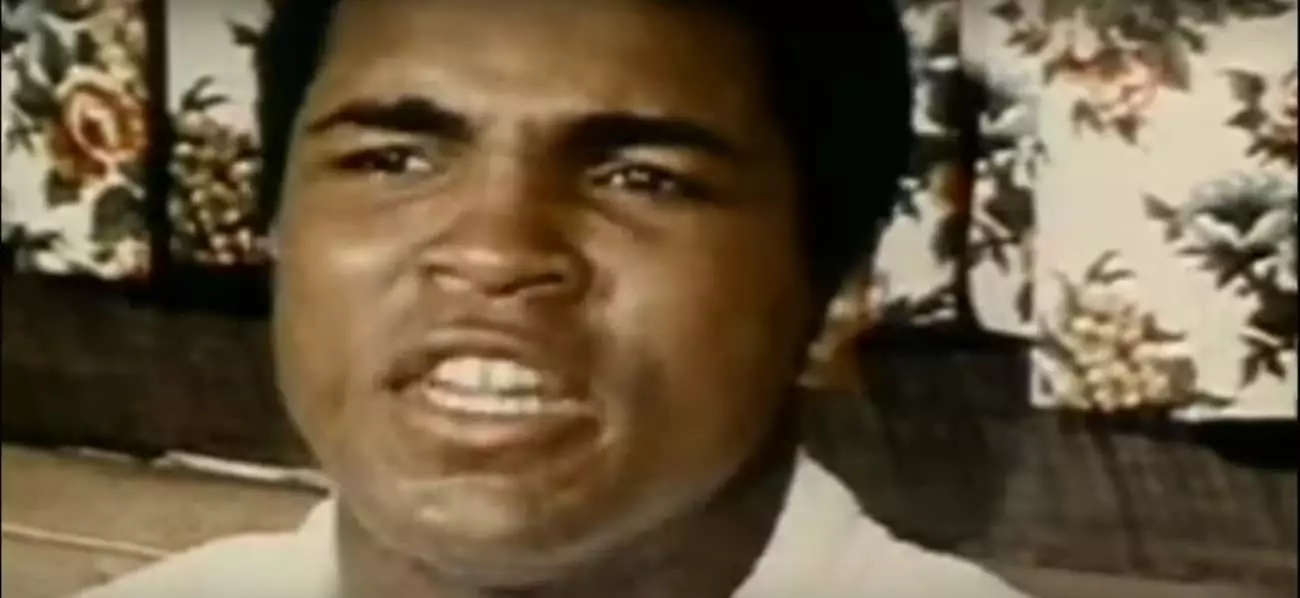BY BOXING HIT STAFF-
Earlier this year, a significant piece of boxing history resurfaced—the satin white shorts worn by Muhammad Ali in his climactic showdown against Joe Frazier. This iconic apparel was auctioned, with estimates predicting they could fetch upwards of $6 million. Such a price tag reflects not just the material value, but the historical gravity of the fight they represent. This clash, which took place nearly five decades ago in Manila, transcended the realm of sports; it became a testament to human endurance, rivalry, and the profound sacrifices athletes make in pursuit of glory.
The bout, known as the “Thrilla in Manila,” has been etched in the annals of boxing as one of the most brutal and captivating title fights. The final match between Ali and Frazier was steeped in a history of animosity, making every punch and counter—every moment of agony—symbolic of their rivalry. The graph of their contrasting fighting styles and personal narratives intertwined to produce a story that remains as riveting today as it was back in 1975.
More than just a contest for the heavyweight title, the match served as a measure of their legacies. Both men entered the ring not only to win a championship but to define their standings in the pantheon of boxing. The implications of this fight were immense; the loser would bear the pain of knowing that their greatest rival had bested them, forever altering the landscape of their careers.
Ali’s approach to the fight was marked by a certain nonchalance, as he believed Frazier’s capabilities had diminished. In contrast, Frazier, training diligently and fiercely, was on a singular mission to prove Ali wrong. It is a poignant reminder that preparation and determination often outweigh overconfidence in high-stakes scenarios. While Ali indulged in distractions outside the ring, Frazier was consumed by a burning desire for retribution.
From the opening bell, Ali sought to assert his dominance. His tactics initially appeared successful; however, Frazier’s resilience soon turned the tide. What transpired over the 14 rounds was a symphony of skill, ferocity, and unyielding spirit. Frazier’s hooks were damaging, both physically and psychologically. As the rounds progressed, Ali’s bravado was tested; he found himself in primal survival mode under Frazier’s relentless assault.
Many fans and boxing pundits often debate the iconic moments of the fight. Frazier’s ceaseless energy and raw aggression metamorphosed the contest into a rollercoaster of momentum, where what seemed like a certain victory for Ali rapidly transformed into a fight for survival. The images of Frazier’s swollen face, a grotesque testament to his endurance, starkly highlighted the physicality of the sport.
The pivotal moment came when Frazier’s corner, recognizing the toll the bout had taken, prevented him from continuing into the final round. Eddie Futch’s decision remains a topic of fervent discussion among boxing enthusiasts. Would Frazier have surged ahead if given the opportunity for those last three minutes? The uncertainty amplifies the dramatic tension surrounding the match and embeds it deeper into boxing lore.
That fight left lasting imprints on both men’s lives. Ali’s momentary victory felt hollow as he collapsed in sheer fatigue, while Frazier would always carry the psychological weight of being second best in this monumental showdown. Their physical adversities became a shared symbol of the sacrifices made by athletes who dare to push the boundaries of human capability.
In retrospect, the physical toll of this fight might have signaled a foreboding for both fighters. The unyielding spirit shown in Manila led them to future bouts where they both might have been better off retiring. Yet, they chose to continue—a decision that speaks to both the allure and the tragedy of boxing.
For those who now own or bid on memorabilia like Ali’s iconic shorts, it transcends material possession; it is about understanding the blood, sweat, and tears etched into every fiber of that garment. It serves as a reminder of the extraordinary lengths to which both fighters went in pursuit of their legacies. Boxing, as showcased in this epic rivalry, is not just a sport; it is a narrative about humanity’s capacity for courage, resilience, and ultimately, the haunting price of greatness.


Leave a Reply